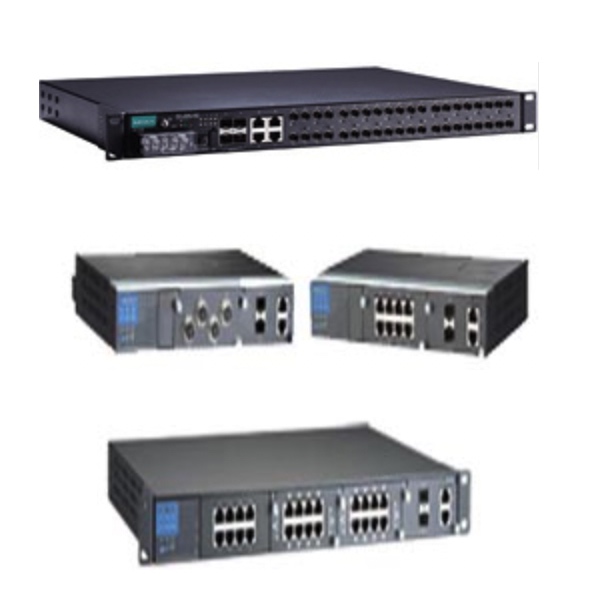Power Substation Switches

Ethernet switches are hardware devices that centralize communications among multiple connected Ethernet devices, such as computers Wi-Fi access points, IoT devices and servers, to one local area network (LAN). They manage the flow of data across the network by transmitting received network packets to one or more devices for which the packets are intended. Ethernet switches can identify every device connected to them and direct the traffic flow of the devices, which ensures the efficiency and security of the network.
Unmanaged Ethernet switches have fixed configurations that cannot be changed. They are plug-and-play devices that are easily added to small networks and don’t need any special set-up. Managed Ethernet switches can manage, configure and monitor the settings of a LAN. They can control LAN traffic, prioritize certain channels and create new virtual LANs to keep smaller groups of devices segregated. Managed switches offer redundancy features that duplicate and recover data in the event of a device or network failure and priority SNMP allows for remote troubleshooting of the network, making it easier to check for issues impacting performance and implementing fixes.
More Information about Power Substation Switches
Moxa PT-7528 Series is designed for power substation automation applications that operate in harsh environments. It features critical packet prioritization, a built-in MMS server and a configuration wizard designed specifically for substation automation. The PT-7528 Series supports Moxa’s Noise Guard technology, is compliant with IEC 61850-3, and its EMC immunity exceeds IEEE 1613 Class 2 standards to ensure zero packet loss while transmitting at wire speed.
Moxa PT-7710 is designed for power substation automation systems and railway applications. The PT-7710’s Gigabit and Fast Ethernet backbone, redundant ring, and 12/24/48 VDC redundant power inputs increase the reliability of the communications and reduce cabling and wiring costs.
Moxa PT-G503-PHR-PTP Series redundancy boxes ensure system availability and data integrity for critical applications in electrical substations and process automation systems that require zero recovery time redundancy.
Industrial Ethernet Switch: How to Select
4 things to consider when selecting Ethernet switches.
Should the switch be managed or unmanaged? Unmanaged switches receive data from connected devices and route it to the desired destination. Managed switches perform the same functions as unmanaged switches, with the added benefit of being able to configure, manage and monitor the Local Area Network (LAN).
What types of devices will be connected to the switch and do they require power? If the devices require power, a Power Over Ethernet (POE) switch will be needed. This type of switch provides power to the devices that are connected to it, as long as those devices are designed for the same type of power. This is very common in IP cameras and surveillance equipment.
How many devices will connect to the switch? Ensure that the switch has enough available ports to accommodate all devices, with spare ports available for future expansion.
How much data will the switch transfer? If the switch is going to handle large amounts of data, it is going to need to operate at high enough speeds to accommodate it. The most common options are Fast and Gigabit. Fast allows up to 100 megabytes per second to be transferred, while Gigabit allows up to one Gigabit per second.

